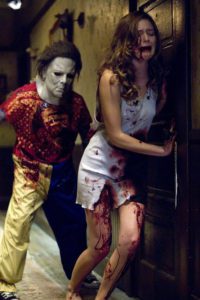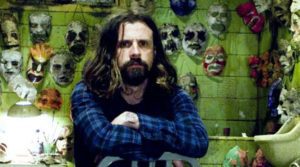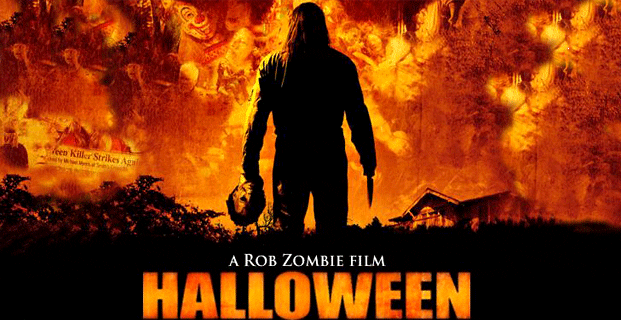Few remakes of horror classics have sparked as much controversy as Rob Zombie’s Halloween. Much of the general public find this film distasteful due to the graphic scenes depicted during Myer’s childhood and throughout the film. Some die-hard horror fanatics of John Carpenter’s original have a disdain for the film that probably coincides with the horror legend’s opinion. Carpenter has expressed his thoughts on the film, calling out the lack of mystery behind Michael.
“I thought that [Rob Zombie] took away the mystique of the story by explaining too much about [Michael Myers]. I don’t care about that,” Carpenter said in an interview with New York Film Academy students. “He’s supposed to be a force of nature. He’s supposed to be almost supernatural. And he was too big. It wasn’t normal.”

Though both arguments have their place, this film does hold its own within modern horror. It can be seen as a standalone film loosely based on its predecessor just as other films claim to be loosely based on true stories. It is closer to reality than many care to recognize, which is why it’s been slammed for its graphic and disturbing content. While all of this controversy surrounds the surface of this film, a deeper meaning about what creates a monster is ignored.
In Carpenter’s original film, we are shown very little of Myers’ childhood. It appears to be a normal ’70s upbringing with a mother and father, as well as an older sister and baby sister. However, as the film opens on Halloween night of ’63, we see the oldest Myers teenager entertaining her boyfriend through the eyes of Michael. Donning his Halloween clown outfit and mask, Michael waits until the boyfriend leaves and proceeds to stalk and kill his sister. As the boy walks out the front door holding a bloody knife, his parents pull into the driveway. Taking off his mask, they are shocked at what they see as they look into the eyes of an expressionless child. With no explanation as to why this atrocity has happened, the film cuts to present day with Laurie Strode, the youngest Myer’s child, having been adopted and living a normal life. This changes when Michael returns to his town after escaping the sanitarium to finish his killing spree.

This introduction still remains iconic in the horror genre due to literally no explanation being offered behind Michael’s actions. This still holds a creep factor to this day. However, in a day and age when the science of psychology has become more refined and information is readily available, Rob Zombie chooses to take an approach that coincides closer to today’s reality.
Zombie’s remake goes on in great detail about Myers’ dysfunctional upbringing. His mother is a stripper, his younger sister is in the cradle, and his older sister is a slutty teenager who explains that the drunkard living in their home is an abusive stepfather. Early on, Zombie makes it clear that Michael is a neglected child in a broken home, which mirrors the type of childhood upbringing that is unfortunately becoming more prevalent in today’s modern society.
When photos of mutilated animals are found in his locker, it appears that Michael has deeper psychological issues and early signs of psychopathic tendencies. Soon after beating his bullying tormentor to death, Michael finally takes his pre-teen murderous rampage to another level by cutting his stepfather’s throat, bashing his sister’s boyfriend in the head with a bat and stabbing his sister to death. After this night of slaughter, Michael is found at his doorstep holding the innocent Myers sibling who never did him any harm. After a quick trial, he is sent to a psychiatric home for treatment, though he has no memory of what he has done.

Those who back Carpenter’s point of view agree that this storyline takes excessive screen time and explains away too much of the mystery behind Michael Myers. However, the original Halloween franchise was meant to end the masked Myers killer after Halloween II. The films that followed in the series were meant to be standalone rather than as part of a franchise featuring the same mask murderer. When Halloween 4 came about, filmmakers were scrambling to bring the masked villain back to life. Inevitably, to avoid a rehash of the same story, the franchise had to produce an explanation, which involved a cult and a curse in Halloween 6.
Rob Zombie bypassed all the stumbling in the dark and encompassed the entire franchise in two installments. Many people are unnerved at the elephant in the room. This film addresses a real life societal issue in the form of entertainment and a remake of a beloved original horror film. It is bold enough to ask, “What produces a serial killer?” To this day, the answer remains unclear since psychology is not yet an exact science. However, Zombie’s Halloween suggests that a perfect storm of internal and external forces were at work to create this infamous fictional serial killer.

John Carpenter’s Halloween will always be a classic and a personal favorite with its strategic storytelling, something that cannot be outdone by any remake. However, the two directors simply have two different versions of the same notorious horror villain. Where Carpenter’s Michael Myers is more of a mysterious supernatural force born within a boy raised in a traditional ’60s and ’70s family, Zombie’s Michael Myers is an unstoppable juggernaut stripped of humanity. Zombie emphasizes the brutality behind Myers by casting Tyler Mane to portray the full grown killer. Standing 6’8” with a bulky build and a ragged version of Michael’s traditional mask, Mane fits Zombie’s reimagination of Myers perfectly, appearing as a monstrosity driven by soulless brute force. Pairing this image with jarring cinematography, Zombie was successful in displaying his vision of Michael Myers.

Being that Zombie shows an ugly side of society that may be too close to reality for comfort, it doesn’t surprise me that most would shy away from this film and brush it off as nothing more than an overrated, gorified remake. In addition, it doesn’t surprise me that dedicated Carpenter fans would shun this as an abomination. Much like Mary Shelley’s classic Frankenstein, Zombie’s Halloween produces some real questions as to who truly is the monster. There is not a black and white answer. However, in the case of Myers, he is an evil force that spawned from a perfect storm. A storm of neglect, hate and abuse that fed into a force of evil that remained dormant until the monster was finally released in the evil that we know as Michael Myers.
 PopHorror Let's Get Scared
PopHorror Let's Get Scared




